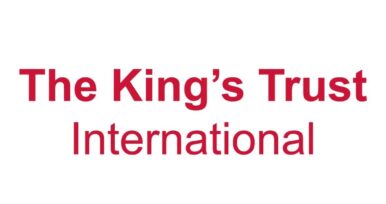24 February 2025
Cuba’s nickel and cobalt miner, Cubaniquel SA, has said that it expects production and efficiency at its joint venture with Canada’s Sherritt International to recover this year following a difficult 2024.
Speaking on the television and radio programme Mesa Redonda, Leonardo Rosell, the Director General of the company said that the business group was undertaking organisational improvements that would transform the company’s management, its exports, and earnings.
His remarks followed a difficult 2024 during which he said, the company introduced austerity measures that slowed growth and saw little investment but enabled it to significantly contain costs to sustain the industry’s operations.
Rosell said that metal production last year was down by 16.6%, and export sales by 32%. He also noted that income to the country only met 75.6% of what had been planned for. This he said reflected a fall in prices for nickel and cobalt internationally, three disconnections from Cuba’s national electric energy system, and the impact of changing geopolitics. In 2024 the joint venture produced 30,331 tonnes of finished nickel and 3,206 tonnes of finished cobalt according to Cubaniquel’s joint venture partner Sherritt International.
Speaking about plans for recovery in 2025, Rosell said that the company had several fundamental goals. The first of these is, he told viewers, is to place committed and capable entrepreneurs in key positions, bringing where possible younger people from universities able to speed up processes and improve the quality and strategic decision making by the company’s staff.
Highlights in this issue:
- Ministry of Foreign Trade and Foreign Investment told it must strengthen its role
- Marrero says Further reform measures to be announced soon
- Innovation Council agrees need to incentivise technology startups
- Influential Senator says he will seek to limit travel from the US to Cuba
- Russian Ambassador says ties are becoming dynamic
“The goal is for them to focus on the needs and not on everyday difficulties in order to be creative and make the right decisions,” he said. This will require, he explained, improving the structure, work systems, working conditions, salaries, and productivity, and eliminating restrictions on their development. He noted also that new technologies are likely to lead to fewer staff working more efficiently and stressed the importance of workers acquiring new skills.
Last month Sherritt said that it had ended 2024 with robust operating results close to its forecast. A company release quoted Leon Binedell, the President and CEO of Sherritt, as saying that operational performance in 2024 “was a resounding success in the face of significant headwinds.” Despite numerous external challenges, “we successfully navigated extraordinary hurdles including hurricanes, an earthquake, and nationwide power outages in Cuba, as well as rail and port labour disruptions in Canada, “ he said.
Sherritt in a market report said that its low cost and low capital intensity Moa joint venture expansion programme continues to advance, and it expects to conclude a second phase in the first quarter of 2025 and then ramp up production. It added: “This will see the Moa JV undertaking a series of measures to remove minor processing bottlenecks to support an expected 20% increase in annual mixed sulphide precipitate (“MSP”) production.”
“The additional MSP is expected to fill the refinery to capacity to maximise profitability from the joint venture’s own mine feed, displacing lower margin third-party feeds and increasing overall finished nickel and cobalt production,” the company said in a late January 2025 statement.
Sherritt’s Moa JV has an estimated mine life of approximately 25 years and is advancing an expansion programme focused on increasing annual MSP production by 20% of contained nickel and cobalt. MSP is a nickel-containing intermediate used in the production of nickel sulphate. The Moa JV is 50% owned by Sherritt and Cuban government owned General Nickel Company SA.
The joint venture’s power division, through its ownership of Energas SA, is the largest independent energy producer in Cuba with installed electrical generating capacity of 506 MW, representing approximately 10% of Cuba’s national electrical generating capacity. The Energas facilities are comprised of two combined cycle plants that produce low-cost electricity from one of the lowest carbon emitting sources of power in Cuba.
Sherritt said that Energas expects that the Varadero facility will operate in frequency control throughout 2025 to help support the stability of the Cuban grid with an estimated reduction in electricity volume of approximately 150 GWh
24 February 2025, Issue 1268
The Caribbean Council is able to provide further detail about all of the stories in Cuba Briefing. If you would like a more detailed insight into any of the content of today’s issue, please get in touch.






